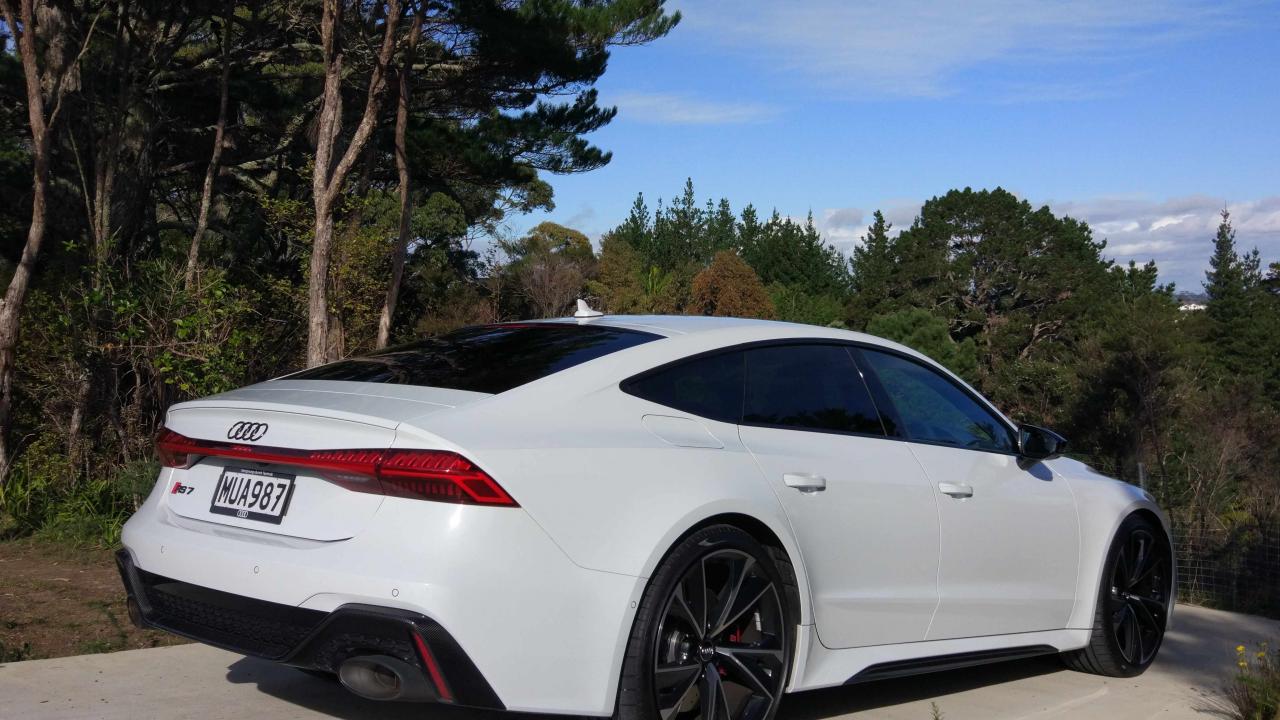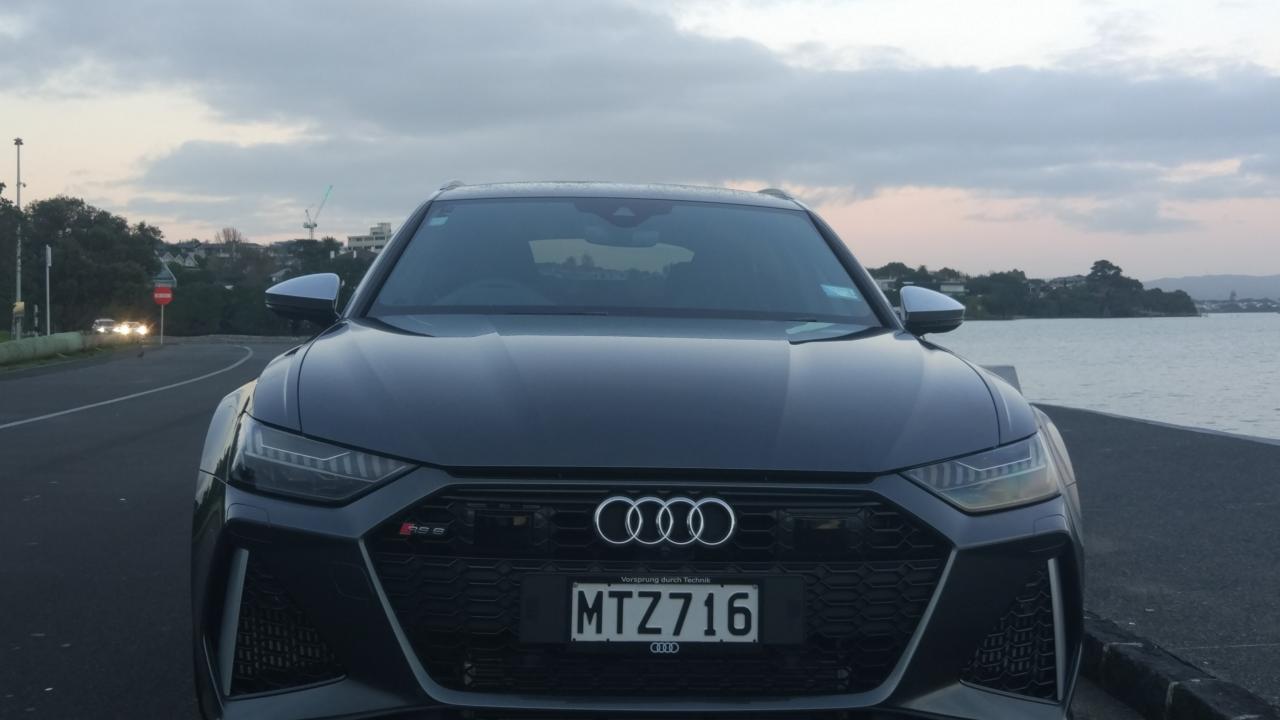Both cars boast supercar-like performance with their twin-turbo V8 engines, but where you’d normally have practicality issues with an Italian beast like a Ferrari or Lamborghini, Audi offers lots of space, in particular on the RS 6 Avant. On top of this, Audis have all the mod cons, luxurious yet sporty interiors and even fuel-saving mild hybrid technology.
We, like many car lovers, have admired the Audi RS 6 ever since the first generation was released way back in 2002. Now in its fourth generation, it arguably has more panache than ever before whilst maintaining the incredible driving experience that we’ve become accustomed to over the last two decades.
The RS 7 Sportback is only in its second generation but shares the performance and overall looks of its bulkier sibling, with the main difference being at the rear end - the RS 7 has a sloping coupe-style back, perhaps more targeted towards the corporate buyer. On the other hand, the RS 6 Avant has a much wider target market due to its increased practicality – it’s the perfect car to take the family up the mountains for some skiing or mountain biking on the weekend. One of the main updates for the RS 7 is the addition of a centre rear seat, which the first generation didn’t have.
We love Audi’s description of the RS 7: “Sitting low to the ground with lines that flow from flared wheel arches, the Audi RS 7 Sportback is not a special something, held back for rare occasions. It’s not weather dependent and it doesn’t excuse itself when the surface won’t play nice. It‘s always at the ready, ever beckoning the next finish line you seek. The blackened grille’s wide-mouth open, eyes pursed in pursuit of the horizon while the coupé-like rear leaves only the memory of red lights in its wake. If 0-100km/h in 3.6 seconds had a look, this would be it.”
As it’s been around for 18 years, Audi knows what drivers of the RS 6 Avant want and have come to expect, and you can really feel that the German marque has set out to try and build on what was already there to make it even better. Assuming there was even a need for it in the first instance.
The Audi RS 6 Avant has a broad and powerful exterior design that is alluring, even when stationary. It’s overtly muscular appearance stems from its athletic body, now flatter and wider than that of its predecessor with an additional 1.6 inches on each side due to its expansive wheel arches.
In addition to the new hood together with the power dome, the RS 6 Avant adopts its front headlights from the Audi A7 range. Audi describe the RS 6 Avant as “A vehicle that’s unafraid of rough mountain terrain and eager to glide along the water’s edge – the new Audi RS 6 Avant boasts performance that can match the adventure ahead. A 4.0 TFSI V8 twin-turbo grips the road and 441kW of power and 800Nm of torque kicks that connection into gear.”
Each car features a dual-screen touch-responsive infotainment system, with haptic feedback that vibrates when a ‘button’ is pressed. The displays are embedded into the black-panelled architecture in a way that renders it almost impossible to see where the display ends and the surroundings begin. The downside to this design is that it easily shows those greasy fingerprints when the ignition is switched off. A wonderful feature is the upper RS monitor display, which the driver can use to bring up an overview of drive system component temperatures, maximum g-forces and information regarding tyre pressures and temperatures.
The flat-bottomed, fully perforated RS leather steering wheel featured on both models is flanked with large RS aluminium shift paddles, which include multifunctional buttons that the driver can use to enable the new Audi drive select RS 1 and RS 2 modes. This automatically opens the RS-specific displays in the Audi virtual cockpit. The striking RS logos adorn the steering wheel, seats, and illuminated front door sill trims. Like with many luxury cars available today, logo projectors on the front and rear doors beam the Audi Sport emblem onto the ground when the doors are open.
Parking is an adventure, with a 3D-view option on the touchscreen allowing you to scroll around the car with just a swipe of your finger to identify any potential obstacles.
Mild Hybrid, how mild?
Thanks to its mild hybrid system (MHEV) with a 48-volt main on-board electrical system, the 4.0 TFSI engine combines maximum performance with high efficiency. The belt alternator starter can recover up to 12kW of power under gentle acceleration and feed it into a lithium-ion battery as electricity. If the driver releases the accelerator between 55km/h and 160 km/h, the drive management will select one of two options.
Depending on the driving situation and the settings in Audi drive select, these cars will either recover energy or coast with the engine switched off, until the driver steps on the accelerator in order for the belt alternator starter to start the engine again. The MHEV technology allows for start-stop mode at speeds below 22km/h. As soon as the vehicle in front starts moving, the engine will spring back to life, even if the brakes are applied. With the MHEV- technology it is possible to reduce fuel consumption by as much as 0.8 litres per 100 kilometres.
These additions are a part of seven all-new Audi RS models arriving in New Zealand this year.
|
At a glance |
|
|
Models |
Audi RS 6 Avant, Audi RS 7 Sportback |
|
Engine |
4.0L TFSI V8 twin-turbo |
|
Price |
RS6 from $218,900, RS7 from $228,900 |
|
ANCAP safety rating |
TBC |
|
Power and Torque |
441kW, 800Nm |
|
Transmission |
Eight-speed tiptronic |
|
Fuel economy |
From 11.6L/100km |
|
Towing capacity |
RS6 only - 750kg unbraked, 2,100kg braked |
|
2WD/4WD/AWD |
Quattro AWD |
|
Seating capacity |
5 |
|
Luggage capacity/payload |
RS6 - 565L, RS7 - 535L |
Safety systems
- Intersection Assist
- 360-degree camera
- Lane Change and Curb Warning
- ABS, EBD, EDL, ASR, ESC
- Active Lane Assist
- Audi Pre Sense rear
- Audi Pre Sense front - with Collision avoidance assist and Turn assist
- Driver/Passenger airbags, side airbags front/rear, curtain airbag system








